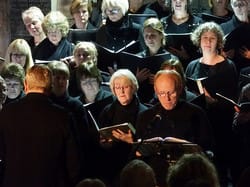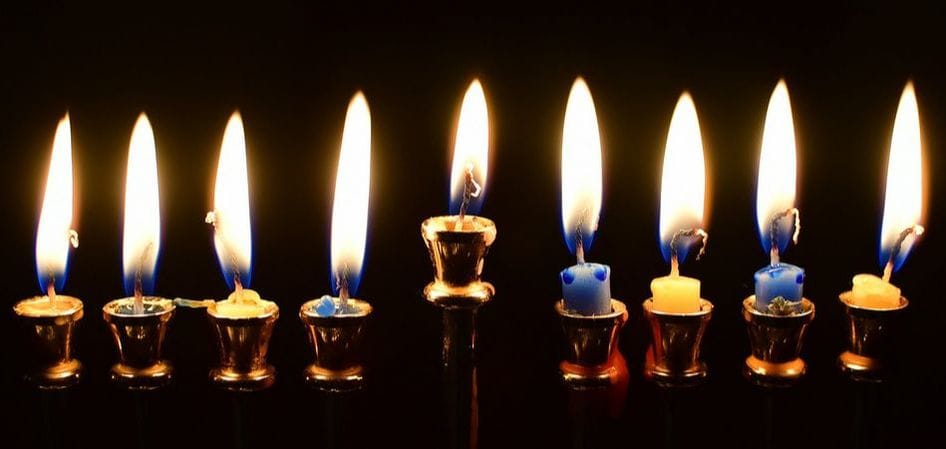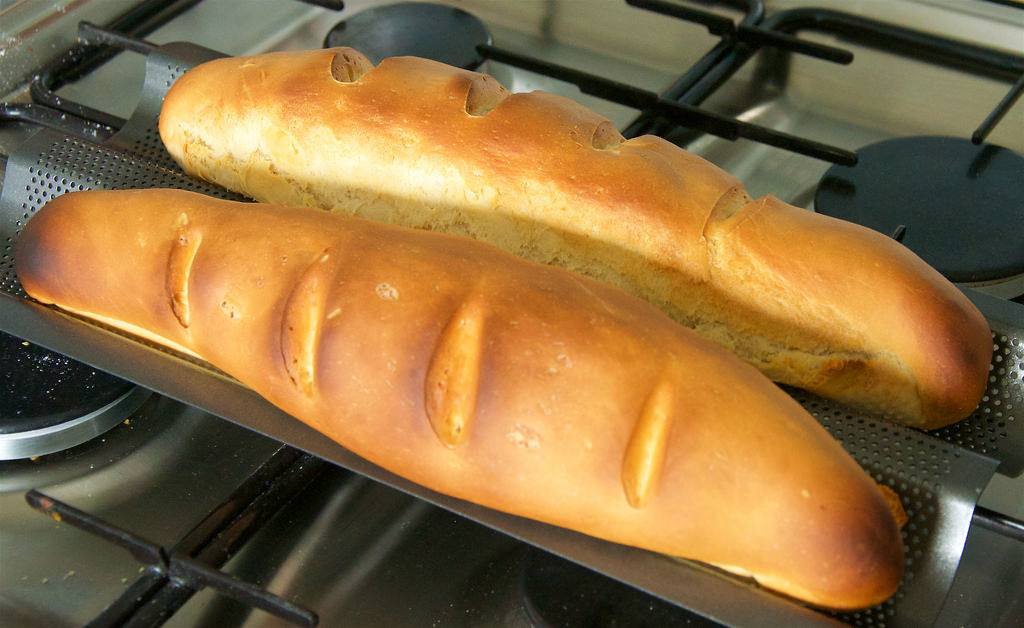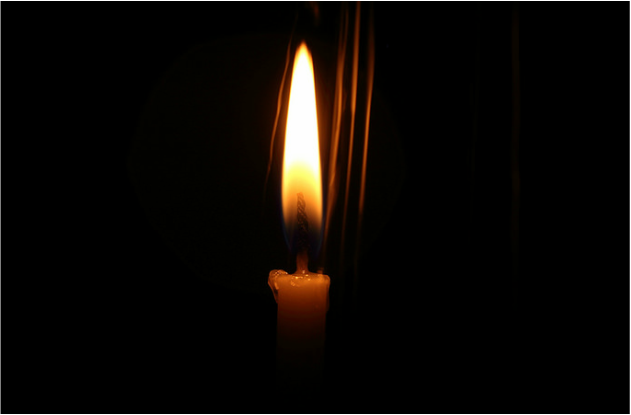|
"Light of the world you stepped down into darkness, opened my eyes let me see. Beauty that made this heart adore you; hope of a life spent with you. Here I am to worship. Here I am to bow down. Here I am to say that you're my God. You're altogether lovely, altogether worthy, altogether wonderful to me." Writer Chris Tomlin captures the essence of what Jesus did when He left His throne to come to earth.
Father God sent John the Baptist as a witness to testify concerning the light and tell everyone that this light would give light to every person. (John 1:7-9) Jesus himself testified to those who would listen: "I am the light of the world. Whoever follows me will never walk in darkness, but will have the light of life." (John 8:12) "I have come into the world as a light, so that no one who believes in me should stay in darkness." (John 12:46) At creation God made a distinction between light and darkness. The first day started in darkness and ended in light as He called forth the light. (Genesis 1:3-5) After separating day and night, on the fourth day He appointed great lights to govern each of them and to separate light from darkness. (Genesis 1:15-19) What happened during the creation of earth mirrored what happened in heaven. There was a separation in heaven when the one who was to lead the angels in worshiping the Lord tried to take His place. The Lord had to separate out the one who led this rebellion along with his followers. (Isaiah 14:12-15) Heaven was meant to be governed by light and we are taught to pray, "On earth as it is in heaven." God sent His light to earth to dispel the darkness and increase light and love. The Church has dedicated today, 12/25, as a time to celebrate the coming of the Light to the earth. This Christmas is special as we see the alignment of the Greek and Hebrew calendars. Two celebrations of light converge and both point to the Light of the World in a unique way. Jew and Gentile will draw closer to the Father of Light simultaneously. The supernatural oil that kept the flames of the menorah burning for eight days when the Temple was rededicated by the priestly family known as the Maccabees is a picture of the Holy Spirit oil that burns in our hearts so that we display the light of Christ's love for the world. We are sons and daughters of the Light--each of us like a lampstand meant to burn brightly. The candlesticks on the menorah are lit one by one through the center candle, positioned higher than all the other candles on the lampstand. It is called the Shamash or Servant candle. Jesus came to earth as a servant to light many "candles." Every time another candle is lit the light increases. Those of us who already have the flame of the Holy Spirit within us can brighten our light through pursuing a deeper relationship with the Light of the World. We must release the sound of praise that paves the way for the Light of the World to chase away the darkness with His powerful light. And we must fan the flame of our hearts by remembering the amazing sacrifice that the Lord made for us. It is interesting to note that the very first public lighting of a menorah outside of Jerusalem occurred in Philadelphia at Independence Mall, near the Liberty Bell. A Jewish Rabbi from Philadelphia felt led to take a menorah outside of the synagogue in the year 1974. That menorah has been lit in the City of Brotherly Love every year since then. Do you see the significance of this? The Light of the World came with a message of love. The love of the Father of the heavenly lights came down through His Son who imparted the light of love to many. We are part of the family of light meant to reveal the love of the Kingdom of Light. Arise and shine, dear ones, "for your light has come, and the glory of the Lord rises upon you." (Isaiah 60:1) "Let your light shine before men, that they may see your good deeds and praise your Father in heaven." (Matthew 5:16) And let us "give thanks to the Father who has qualified you to share in the inheritance of the saints in the kingdom of light." (Colossians 1:12)  The story of the birth of our Savior, Jesus Christ, has been an inspiration for those who write poetry and music. Divine influence on those writers produced melodies and verses that have endured year after year. Details of the circumstances surrounding Christ's birth and the reason for His coming put to song draw us in so that we join in singing. Did you ever think about how many Christmas concerts are produced each year? Many music directors in churches and schools from elementary through college level prepare their students to play and sing the Christmas songs that have been handed down from generation to generation. As I was growing up, preparing for our yearly concerts was exciting and culminated in a production attended by my family. Life has a way of going full circle. Last week I found myself attending a Christmas concert put on by the residents of the senior living center where my mother lives. Over 50 residents were part of the choir that was accompanied by a piano player and two trumpet players. The director had a diverse program of songs including, "God Rest You Merry, Gentlemen," "Gesu Bambino," "What Child is This," "Lo, How a Rose," and "Joy to the World." Most of the choir members sang with great abandon, except for one gentleman sitting on the front row. He looked distressed and hardly moved his mouth. When I questioned my mother about this she told me that he is almost totally deaf. Yet, he wanted to be part of this celebration. I am sure that he was hearing the songs in his mind as he tried to sing along. My mother went on to tell me that everyone is welcome to participate in the choir. As I reflected on the conversation I had with my mother a fun song by Celtic Thunder came into my head that depicts the all-inclusive choir. The verses of this song--"A Place in the Choir"--tell of different animals and how they uniquely participate in singing. Then comes the chorus: "All God's creatures got a place in the choir. Some sing low and some sing higher. Some sing out loud on a telephone wire. Some just clap their hands, or paws, or anything they've got now." This song presents a wonderful picture of God's intention to draw us all in and to use whatever He has given us to worship Him. The Lord is certainly an all-inclusive Savior! He came to invite everyone to join Him for eternity. For everyone who receives Him, His message is clear and meant for every individual on the face of this earth. As it says in the song, "Thou Didst Leave Thy Throne," "There is room at My side for thee." Life on earth is practice for eternity where worship of the Lord will occur 24/7. John writes about what he saw in heaven in Revelation 5:11-14. "Then I looked and heard the voice of many angels, numbering thousands upon thousands, and ten thousand times ten thousand. They encircled the throne and the living creatures and the elders. In a loud voice they sang: 'Worthy is the Lamb, who was slain, to receive power and wealth and wisdom and strength and honor and glory and praise!' Then I heard every creature in heaven and on earth and under the earth and on the sea, and all that is in them, singing: 'To Him who sits on the throne and to the Lamb be praise and honor and glory and power, for ever and ever!' The four living creature said, 'Amen,' and the elders fell down and worshiped." Yes, there is a place reserved for each of us in the great choir in heaven where we will worship our Lord and King for eternity. In the meantime, we can practice as members of the choir, just as one of the lesser known verses of "Silent Night" says: "With the angels let us sing; Hallelujah to our King! Jesus Christ is here! Jesus Christ is here!"
Every ingredient used to bake fresh bread and the right time for adding it to the mixture is important. An expert bread maker knows the perfect way to put it all together. We have such a person at my church. Marti has been baking bread for years. Those of us who know her look forward to the times when she treats us to her outstanding bread. Last weekend I had the privilege of smelling Marti's warm bread right after it was baked. I could hardly wait for her to slice it. Eating Marti's bread is truly a heavenly experience. As I was eating this bread, thinking it is probably the best bread I have ever tasted, I was reminded of when Jesus talked about how bread comes down from Father God in heaven. Everything we need is supplied through the bread that comes from heaven. This truth was introduced to the disciples, as we read in John 6. Jesus reminded them that their forefathers ate manna in the desert--heaven-sent bread. The Lord told Moses, "I will rain down bread from heaven for you..." (Exodus 16:4) The people did not recognize the form of the bread, and they called it manna, which means "What is it?" However, it fed and nourished them for 40 years until they were ready to cross over into the Promised Land. About 1,500 years later, Father God decided it was time to send bread to His people again. It would come in a form that no one would recognize. However, He gave us hints of what He was doing through the place where this bread would be birthed and the circumstances surrounding it. God carefully orchestrated the timing for each ingredient in the family line that He hand-picked. He chose a virgin named Mary, pledged to be married to a man named Joseph, a descendant of David, to nurture and bring forth the Living Bread. The Holy Spirit would overshadow Mary to place within her the Son of God, whose name was called Jesus, meaning Jehovah (Eternal One) is salvation/Savior. (Luke 1:27-37) Joseph and Mary found it necessary to go to Bethlehem, the town of David, to participate in a census. It was a timely visit as Mary would give birth to Jesus in the very place whose name means "House of Bread." Every detail of this story was meticulously planned to speak of what God was doing--giving us Living Bread. God's plan would be confirmed over and over again in gatherings where Jesus would reveal His identity as "Bread." During the time that Jesus walked the earth bread would have been baked daily. It was a staple of life. Consequently, it was used in certain aspects of worship. Bread, both leavened and unleavened, was offered to God as a firstfruits or peace offering. The Bread of Presence was displayed in the temple next to the Holy of Holies. There were 12 loaves of unleavened bread (one for each tribe) as a reminder of God's covenant with His people. Jesus multiplied bread at the feeding of the 5,000. He fed everyone with five leaves of barley bread. No one went home hungry. Some began to connect the dots and thought that Jesus could be the longed-for Messiah. In John 6 we can read how Jesus confirmed to His disciples that He is the "Bread of Life." He told them, "For the bread of God is He who comes down from heaven and gives life to the world...I am the Bread of Life. He who comes to me will never go hungry, and he who believes in me will never be thirsty." (John 6:33, 35) Jesus demonstrated to the disciples how he would have to die for our salvation by breaking bread at their Passover celebration. He said, "This is my body given for you; do this in remembrance of me." (Luke 22:19) Indeed, His disciples did not recognize Him after His resurrection until He took bread, gave thanks, broke it and gave it to them. (Luke 24:30-31) From the time when Jesus was tempted in the wilderness we can see God's intention to have us feed on "spiritual bread." Jesus tells the devil, "Man does not live on bread alone, but on every word that comes from the mouth of God." (Matthew 4:4) And when Jesus instructed His disciples on how to pray they were told to say, "Give us this day our daily bread." (Matthew 6:11) In this season of Advent, let us remember to give thanks for the One who was sent by God to be our daily bread--the Living Bread--who daily nourishes our souls and looks forward to the time when we will live with Him forever. When our Greek calendar converges with the Hebrew calendar it is time to pay attention. It has happened this year. December 1 is Kislev 1. Kislev is derived from the Hebrew word for trust and security. Consequently, this month is for us to have a greater trust in God and a time to enter His rest and peace. We should remember that God demonstrated His faithfulness to His people through the miracle of Hanukkah—a Jewish holiday that starts in the month of Kislev and ends in the next month--Tevet.
The first night of Hanukkah and Christmas even fall on the same night. I delight in thinking about how the Church will be lighting candles and singing "Silent Night" as the Jewish people will be lighting the first candle of the menorah. The message of both celebrations is the same: The Light will not go out! Also consider that the final day of Hanukkah (day 8) occurs on New Year's Eve. The Eternal Light came to earth to declare and demonstrate the truth. In the midst of a dark and tumultuous time in history He came to bring hope and mercy. He said, "I am the Light of the World. Whoever follows me will never walk in darkness, but will have the light of life." (John 8:12) The Light of the World could not be put out; the death of Jesus on the cross was not the end. His resurrection was witnessed by many. His light is still burning in those who have believed in Him. Miraculous!! The Lord's miracle of perpetual light was demonstrated to the Maccabees when they defeated the armies of Antiochus in 164 B.C. after years of battle. When they entered the Temple they found that it had been defiled in every way imaginable. Cleansing the Temple became their priority. When it was time to rededicate it to the Lord by lighting the menorah the Maccabees could only find one jar of holy oil bearing the seal of the high priest. The menorah was lit in faith and trust. Much to their delight, the oil burned for eight days, the amount of time it took the priests to prepare more oil. Today the miracle of Hanukkah is remembered through the lighting of a candle on the menorah for each of eight days. Eight is the number of new beginnings, sanctification and resurrection. The nine-branched menorah has a center candle called the "Shammas" or "Servant" candle. That center candle provides the light for the other eight candles. Is this not a prophetic picture of Jesus/Yeshua who came to the earth as the Servant who brought light to the world? The Temple had been destroyed, but the Lord gave the Maccabees a sign of hope. The other message of this time period is that in the midst of destruction there is mercy. How appropriate this is for Israel today. She is surrounded by nations that want to destroy her. Last month over 2,000 fires blazed, some burning out of control. It is reported that 40 to 50 percent of them were set by terrorists. Dry conditions made it difficult to fight the fires. The good news is that other nations came to help battle the fires and the rains began to fall on Thursday. This month is one where we should seek revelation on the development of warfare strategies. It is aligned with the tribe of Benjamin, the one gifted with the art of the bow. A reminder of this is in the night sky with the constellation Sagittarius, the archer. Israel will be developing strategies to battle those who want to destroy them. We should be doing likewise. They will also be looking for the best way to rebuild the homes that were destroyed, repair the infrastructures that were damaged and replant the forests that were burned to the ground in the fire. They need heaven to come to earth in order to move forward. Along with Israel, we must remember the messages of this season: (1) There is mercy in the midst of destruction that will be imparted to build the future. (2) The light will never go out! With God nothing is impossible. (Luke 1:37) His grace is sufficient for us, for His power is made perfect in weakness. (2 Corinthians 12:9) Let us give thanks to the Lord, for His love/mercy endures forever. (2 Chronicles 20:21) |
Joan E. MathiasCategories
All
Archives
July 2024
|



 RSS Feed
RSS Feed